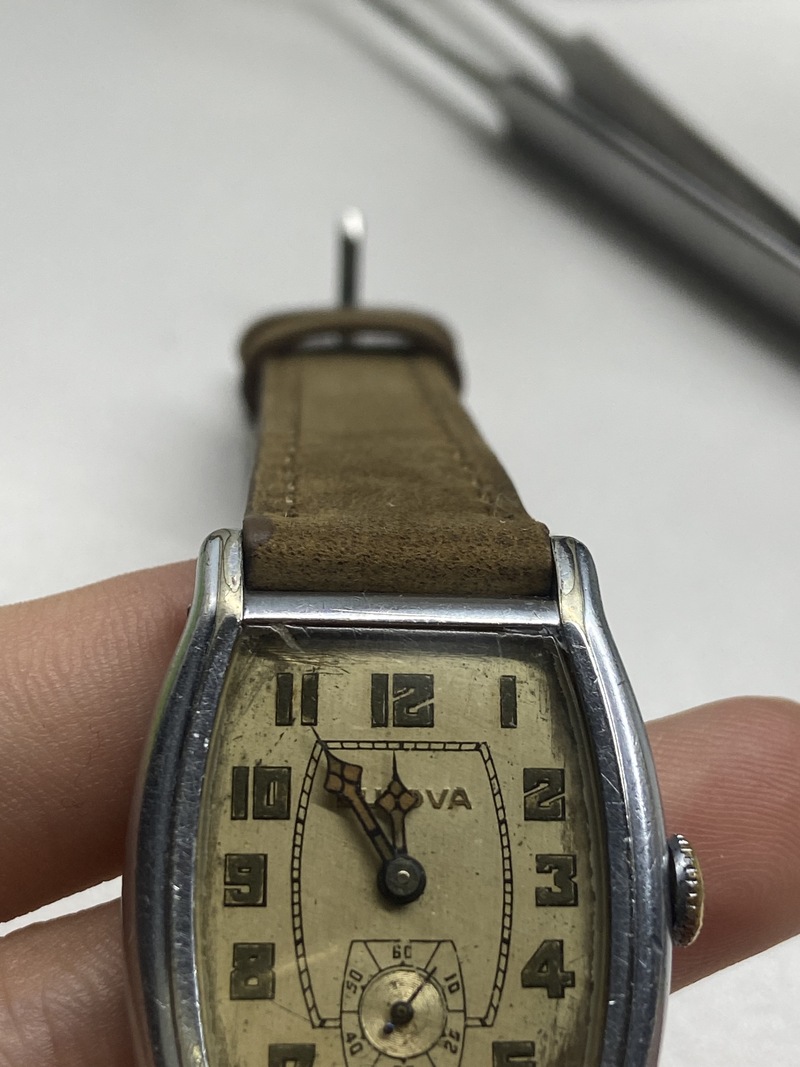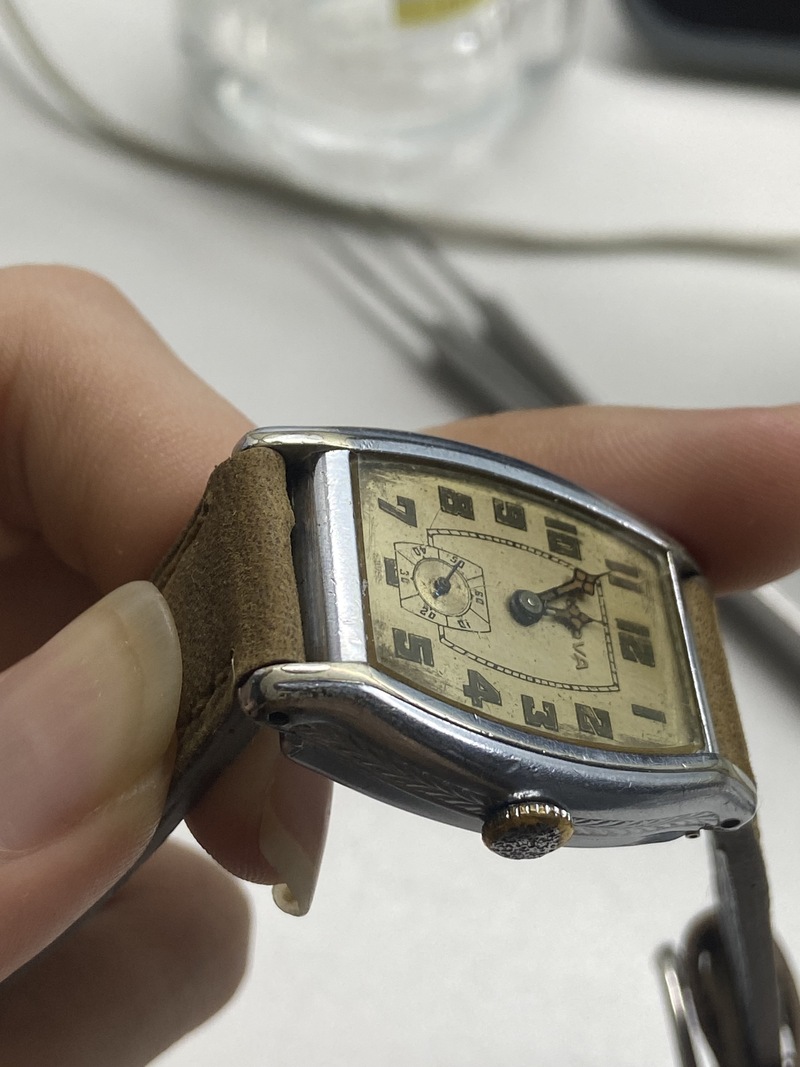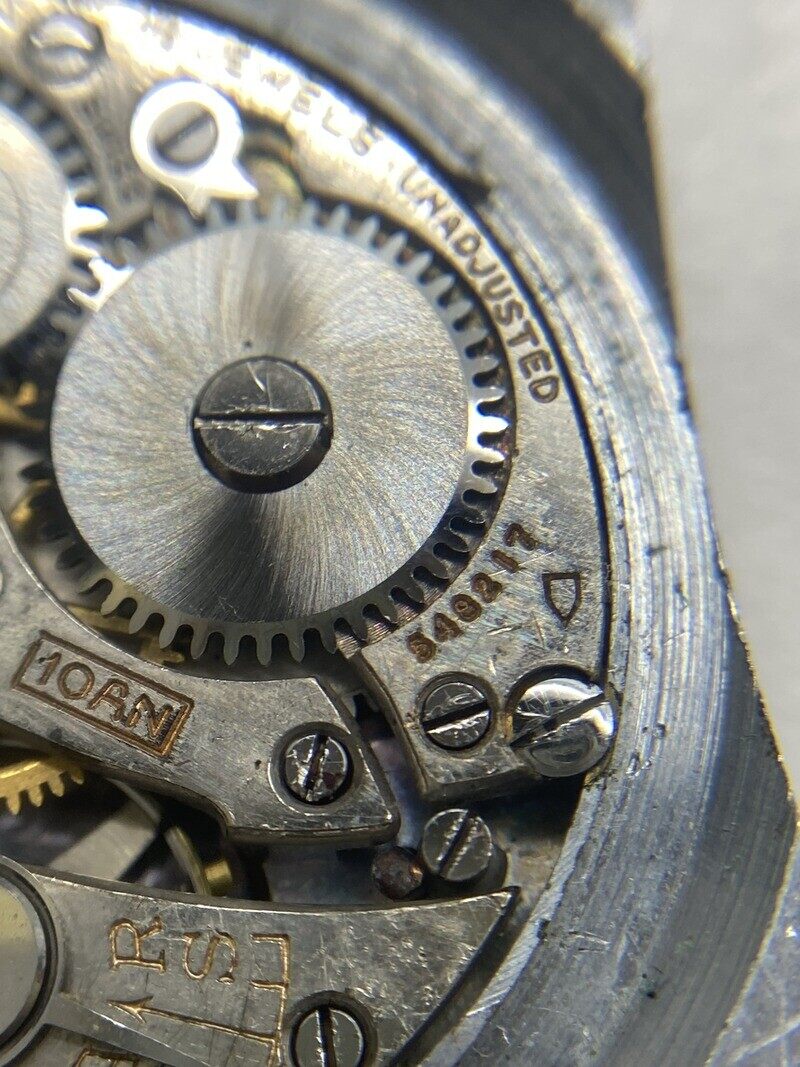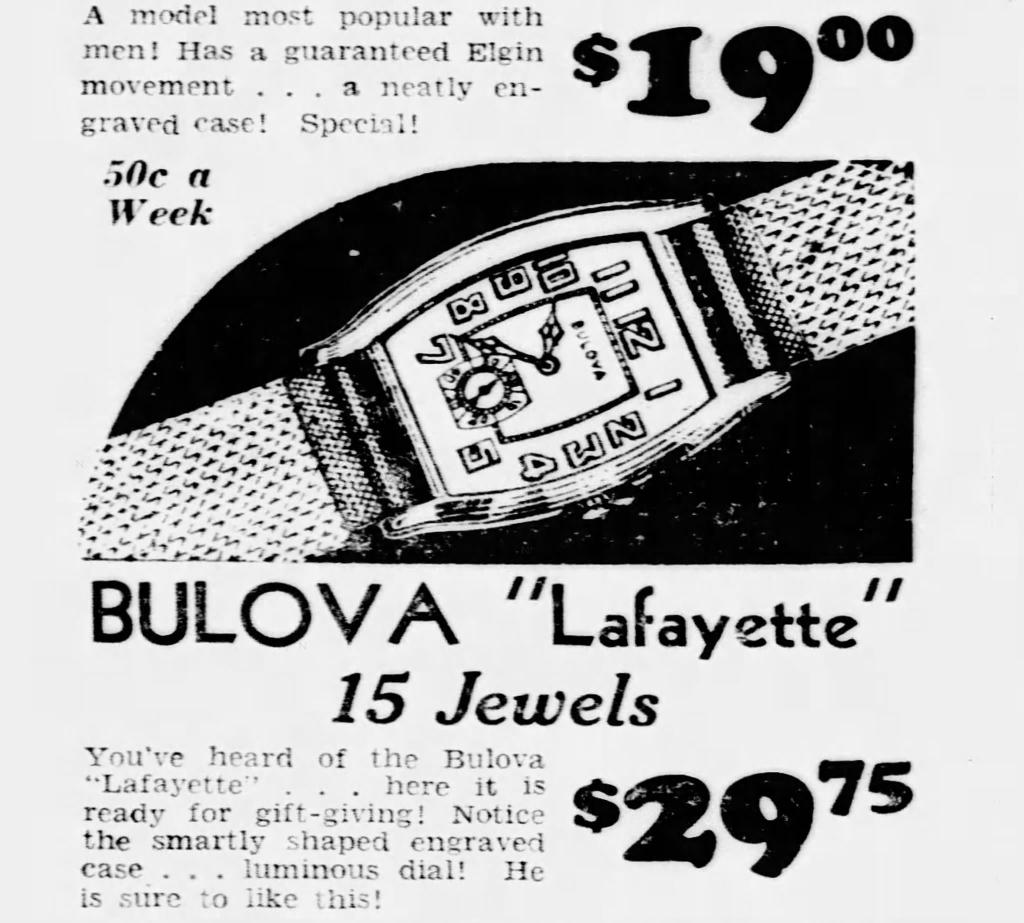Tonneau shape - With plastic transparent dust cover - Sub seconds dial - Radium hour markers





With Bulova watches there are a number of ways we date watches. Check out this page to see how to best determine the year a watxh was made.
Bulova Date Codes | myBulova.com
In this case we use the first digit in the case serial number '2' and place the watch in a certain time period, again in this case it's the 1930s...thus 1932.
In reply to With Bulova watches there… by mybulova_admin
I see them as white gold, only at the corners there is some brassing, showing a different color.
My take on the discussion. The ridgeless Lafayette was supplied from 1927 until end 1929. The two-tone Dewey was introduced in 1929, so both models overlap in that year. Then, in 1930, the ridgeless Lafayette disappears and a fully white gold model with ridge appears. Question is: is this new model the successor of the ridgeless model with name Lafayette, or a full white gold version of the Dewey baring the same name? For a conclusion, we need to look for an ad of the Lafayette with ridge and from 1930. See below ad of 12 December 1930. I see ridges clearly visible in the bottom right lug. Hence, the full white gold model with ridge is a Lafayette, that succeeded the ridgeless model supplied earlier from 1927 until 1929. This was probably a manufacturing model rationalization. They could now produce just one case with two finishes.

So question from me.
Are we seeing brassing of the white gold layer down to the base metal, or wear on the green gold inlay down to the white gold layer?
My take would be that the green gold inlays would be a thin plate layer and the white gold would be rolled/filled and much thicker.
Maybe having a better photo of the brassing area on the lugs might help us determine this.
In reply to So question from me. Are we… by mybulova_admin
In reply to So question from me. Are we… by mybulova_admin

